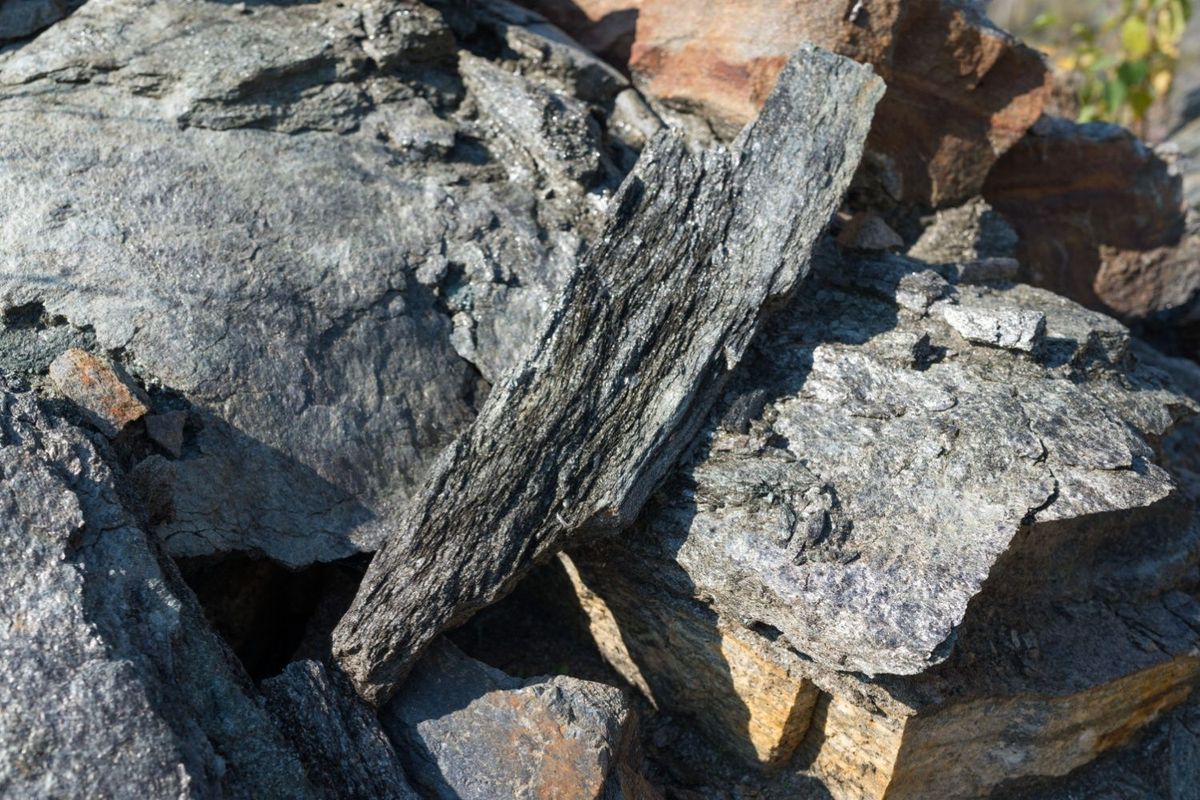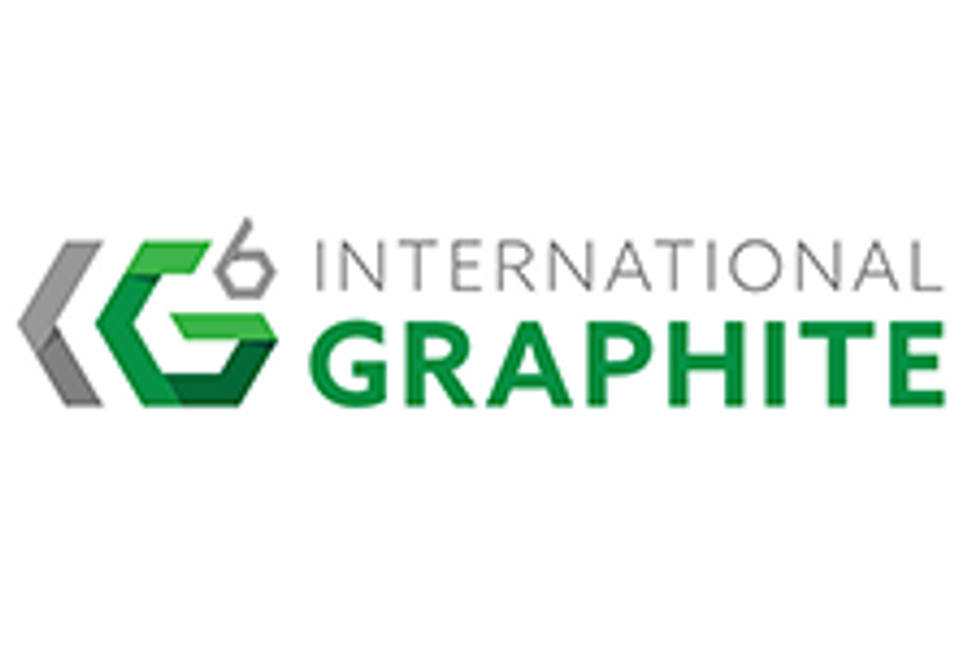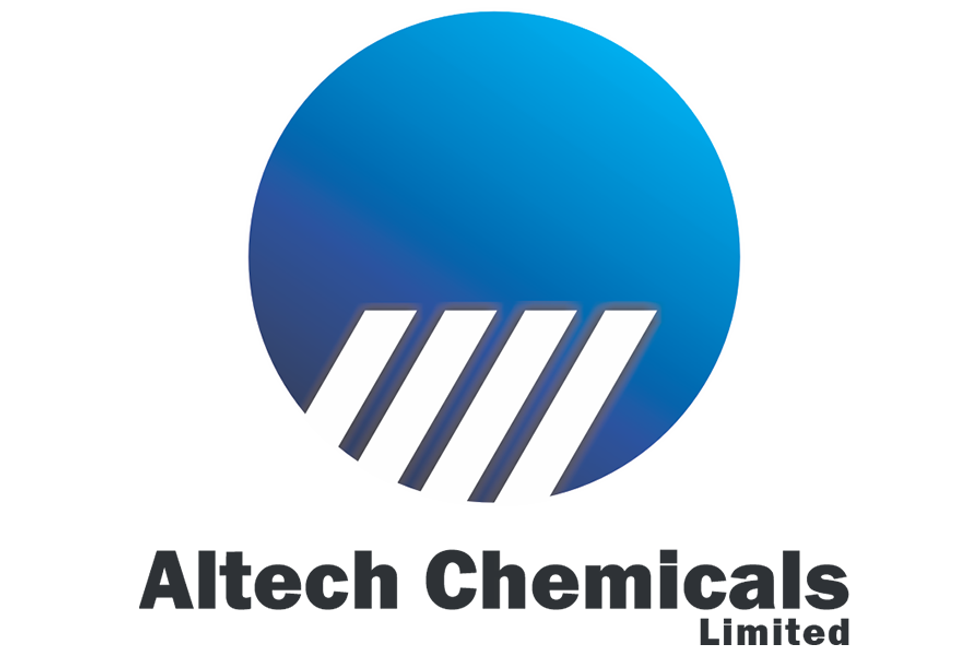Top 10 Graphite-producing Countries
Explore the top graphite-producing countries and their reserves here, including the largest graphite producers — China, Madagascar and Mozambique.

Graphite is an excellent conductor of heat and electricity and also has the highest strength of any natural material. However, it wasn’t until recently that the metal began to gain popularity.
Interest in graphite mining is increasing in large part because lithium-ion batteries are becoming more common. These batteries are used in everything from phones to electric vehicles (EVs), and graphite is one of their key raw materials. Both synthetic and natural graphite, in the form of the intermediate product spherical graphite, are products that are used in the anodes of lithium-ion batteries. As lithium-ion battery demand grows, graphite demand is also expected to rise from nations around the world.
In fact, despite discussions on changes in lithium-ion battery chemistry, many experts think graphite will remain a key raw material in EV batteries for at least the next decade. Hence, demand for graphite from the battery anode segment is set to experience significant growth as electric car sales and the energy storage trend continue.
Fortune Business Insights projects that the global graphite market will experience a compound annual growth rate of 6.9 percent between 2025 and 2032 to reach a value of US$13.35 billion. "Increasing demand from the refractory industry and skyrocketing demand from the battery industry are creating a supply crisis, pushing different countries worldwide to consider securing their requirements," the firm stated.
Where is graphite found?
Graphite is found in metamorphic and igneous rock in many regions of the world, but especially Asia and East Africa.
For any investor following the sector, it will come as no surprise that China is dominating both the mining and refining sides of the graphite market for natural and synthetic. China also hosts the world's largest known natural graphite reserves at 81 million metric tons (MT). Brazil, Mozambique, Madagascar and Tanzania round out the top five largest graphite reserves by country, and also rank among the top 10 graphite producers.
Graphite production by country
Read on for a look at global graphite production by country in 2024 to learn more about where graphite is mined, using data from the latest US Geological Survey (USGS) Mineral Commodity Summary.
1. China
Natural graphite production: 1.27 million metric tons
Graphite reserves: 81 million metric tons
China was the world’s largest graphite producer in 2024, producing 1.27 million metric tons of the metal. According to the USGS, the country accounted for about 78 percent of world graphite mine supply last year. Around 85 percent of its 2024 production was in the form of flake graphite.
China’s stranglehold on the graphite market was strengthened by its quick graphite production recovery after COVID-19 shutdowns. The country's government policies can have a dramatic impact on prices for the material.
"During the first 8 months of (2024), China exported 38,200 tons of flake graphite concentrate, 25% less than the 50,700 tons exported in the same period in 2023," the USGS reports, "... (and) 25,500 tons of spherical graphite, 28% less than the 35,600 tons exported in 2023."
China Minmetals operates the Yunshan graphite mine, one of the world's largest graphite mines, in Heilongjiang Province. It produces 200,000 MT of graphite annually.
2. Madagascar
Natural graphite production: 89,000 metric tons
Graphite reserves: 27 million metric tons
Madagascar's natural graphite production in 2024 totaled 89,000 metric tons, 26,000 MT more than it had in 2023. Now the second highest graphite producing country, the East African nation has risen through the ranks in recent years from its fifth-place spot in 2021. Madagascar has the third largest graphite reserves at 27 million MT.
Growth in Madagascar’s graphite mining industry is being aided by developing projects. For example, NextSource Materials' (TSX:NEXT,OTCQB:NSRCF) Molo graphite mine began commercial production of its SuperFlake graphite concentrate in June 2023. The company is now focused on ramping up plant throughput to its nameplate capacity of 17,000 MT per annum. As of late October 2024, the company made its first commercial shipments of SuperFlake concentrate from the Molo mine to the United States and Germany.
3. Mozambique
Natural graphite production: 75,000 metric tons
Graphite reserves: 25 million metric tons
Mozambique takes the third spot on the list with graphite output of 75,000 metric tons in 2024, down 24 percent from the previous year. The country is home to two main graphite miners: Syrah Resources (ASX:SYR,OTC Pink:SYAAF) and Triton Minerals (ASX:TON).
Australia-based Syrah Resources’ Balama project is the world’s largest integrated natural graphite-mining and processing operation. "Syrah produces 23 natural graphite products across eight different mesh sizes at Balama," according to Mining Data Online (MDO). "Balama also supplies flake with properties outside of typical market specifications to special purpose customers."
In May 2023, the company put the brakes on production at Balama on falling graphite prices. Operations were restarted in the third quarter of the year, although at a lower production rate, according to the USGS. Lower production rates continued into 2024 as Syrah was awaiting a time when graphite demand and prices warranted higher production rates. Ongoing political unrest in the country has further hampered production, which the company halted in the the fourth quarter of 2024.
Triton Minerals is advancing the Ancuabe project, which is in the permitting stage and garnered environmental license approval in November 2024. The company is in the process of divesting 70 percent control of its Mozambique graphite assets to Chinese firm Shandong Yulong.
4. Brazil
Natural graphite production: 68,000 metric tons
Graphite reserves: 74 million metric tons
In 2024, output from Brazil's graphite mines totaled 68,000 metric tons, up slightly over the previous year.
Brazil's ranking among the top graphite producing countries has slipped in recent years. The South American nation was the world’s second largest graphite producer in 2021 with output of 82,000 MT during the period. Brazil’s 2022 graphite-mining output decreased by 10,000 MT from the previous year at the same time as Madagascar and Mozambique saw much larger gains in their graphite production.
Brazil has the second highest graphite reserves by country, coming in at 74 million MT. Little information is available about the Brazilian graphite-mining industry, as the country’s top producers of the metal are private. However, the nation has become a hot spot for graphite exploration and development.
One newly operating project is South Star Battery Metals' (TSXV:STS,OTCQB:STSBF) Santa Cruz large-flake graphite property, at which Phase 1 commercial production began ramping up in October 2024. Phase 1 has graphite production capacity of 12,000 MT per year, with planned Phase 2 and 3 potentially raising capacity as high as 50,000 MT annually.
5. India
Natural graphite production: 27,800 metric tons
Graphite reserves: 8.6 million metric tons
India’s graphite output in 2024 came to 27,800 metric tons, a jump of 2,200 MT over 2023's amount. India’s graphite reserves total 8.6 million MT, with the state of Arunachal Pradesh holding nearly half of the country’s reserves.
India has several main graphite miners, including Tirupati Carbons & Chemicals, Chotanagpur Graphite Industries and Carbon & Graphite Products. HEG (NSE:HEG,BSE:509631) is a leading, although small-scale, graphite electrode producer.
6. Tanzania
Natural graphite production: 25,000 metric tons
Graphite reserves: 18 million metric tons
Tanzania produced 25,000 metric tons of the material in 2024, up more than 89 percent over the previous year's output. The East African country is also home to the world's fifth largest graphite reserves at 18 million MT.
Tanzania has become a hot spot for new graphite projects, so the country's mine production capacity is expected to increase in the coming years. In July 2024, Walkabout Resources (ASX:WKT) began shipping graphite concentrate from its newly operating Lindi Jumbo graphite mine to the European market. The USGS states that Lindi Jumbo mine's capacity was 40,000 metric tons per year of graphite concentrate in 2024.
Volt Resources (ASX:VRC) recently got the green light from regulators to begin the work necessary to bring its large-scale Bunyu graphite project into production.
7. Canada
Natural graphite production: 20,000 metric tons
Graphite reserves: 5.9 million metric tons
New to this list of top graphite producing countries, Canada is tied for seventh place with Russia. Canada's graphite output increased by more than 265 percent in 2024 to total 20,000 metric tons.
The country's sole graphite producer, and in fact the only graphite producer in North America, is Northern Graphite (TSXV:NGC,OTCQB). The company's Lac des Iles Mine in Québec has been producing graphite for more than 30 years. Northern Graphite has plans to ramp up output to 25,000 MT per year, focusing on supplying the battery supply chain with its graphite products. The company also owns the large-scale Bissett Creek project in Ontario.
7. Russia
Natural graphite production: 20,000 metric tons
Graphite reserves: 14 million metric tons
In 2024, Russia produced 20,000 metric tons of graphite, 5,000 MT above its output level from 2023. However, this wasn't enough to retained its title of sixth largest graphite producer and instead the nation tied with Canada for seventh place. Prior to its war with Ukraine, the country was expected to significantly increase its production at operations owned by Dalgraphite and Uralgraphite.
While it's not always easy to obtain detailed information on Russian resource companies, the USGS does report that a Russian company was expected to bring a new graphite mine into production in late 2024 with an estimated capacity of 40,000 metric tons per year of flake graphite concentrate.
9. South Korea
Natural graphite production: 9,600 metric tons
Graphite reserves: 1.8 million metric tons
South Korea, officially the Republic of Korea, produced 9,600 metric tons of graphite in 2024, nearly unchanged from the 9,620 MT produced in the previous year.
The South Korean government has a stated goal of becoming a leader in the global EV battery market and transitioning away from reliance on China for its graphite requirements. South Korea's Ministry of Trade, Industry and Energy is dedicating US$7 billion to this goal.
10. North Korea
Natural graphite production: 8,100 metric tons
Graphite reserves: 2 million metric tons
North Korea's total graphite output last year came to 8,100 metric tons, on par with its production over the last few years. As for its graphite reserves, North Korea hosts 2 million MT of the battery metal. Little further information is available on graphite mining in North Korea.
11. Norway
Natural graphite production: 7,000 metric tons
Graphite reserves: 600,000 metric tons
Rounding out this list of top graphite producing countries is Norway with 7,000 metric tons in 2024. The country's graphite output rose from 6,480 MT in 2023.
All graphite deposits in the country contain flake graphite and are generally low tonnage. That said, many are in favorable locations — for example, close to the sea or to the electrical grid. The Skaland graphite mine in the northern region of the country is the only such mine in Scandinavia and the largest crystalline graphite producer in Europe. Norge Mining announced plans to acquire the mine from Australia's Mineral Commodities (ASX:MRC) in December 2024.
Don’t forget to follow us @INN_Resource for real-time news updates!
Securities Disclosure: I, Melissa Pistilli, hold no direct investment interest in any company mentioned in this article.
Editorial Disclosure: NextSource Materials is a client of the Investing News Network. This article is not paid-for content.
- Top 3 Canadian Graphite Stocks ›
- Graphite Market Forecast: Top Trends for Graphite in 2025 ›
- ASX Graphite Stocks: 5 Biggest Companies ›
- Types of Graphite: Amorphous, Flake and Vein ›
- How to Invest in Graphite ›






